
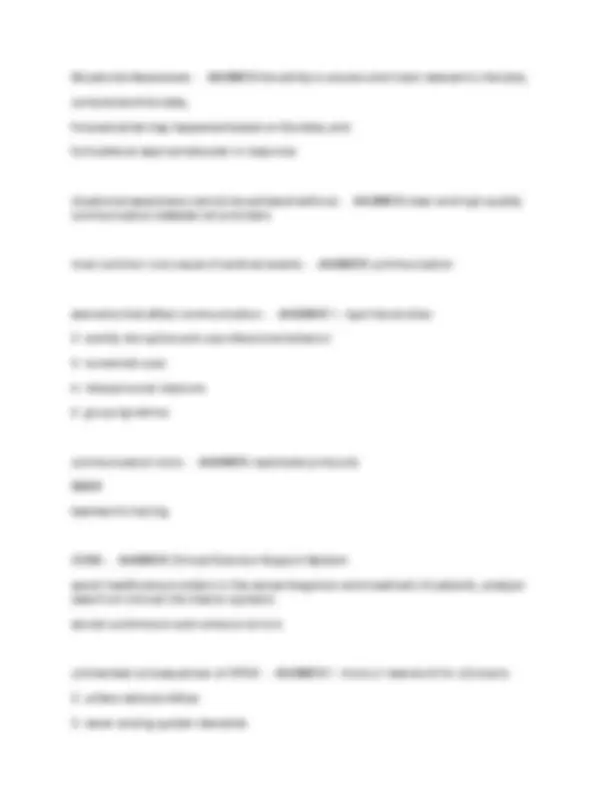
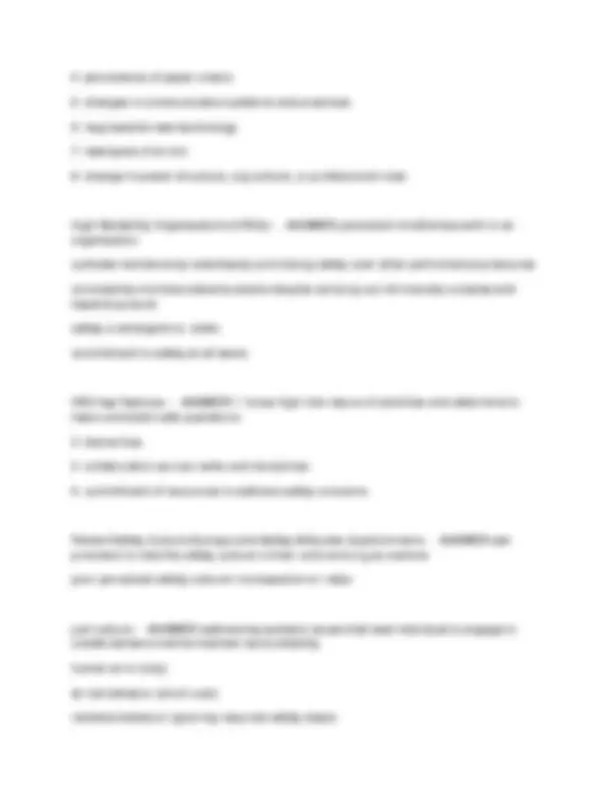
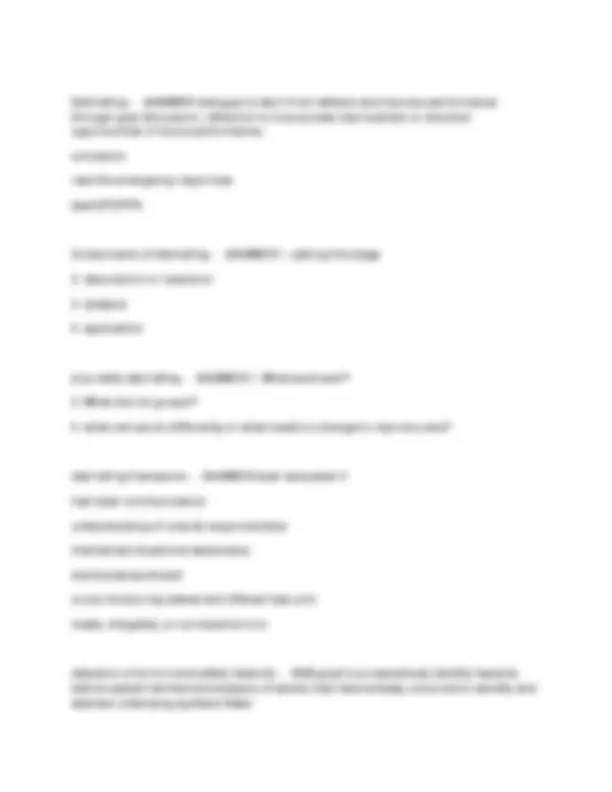
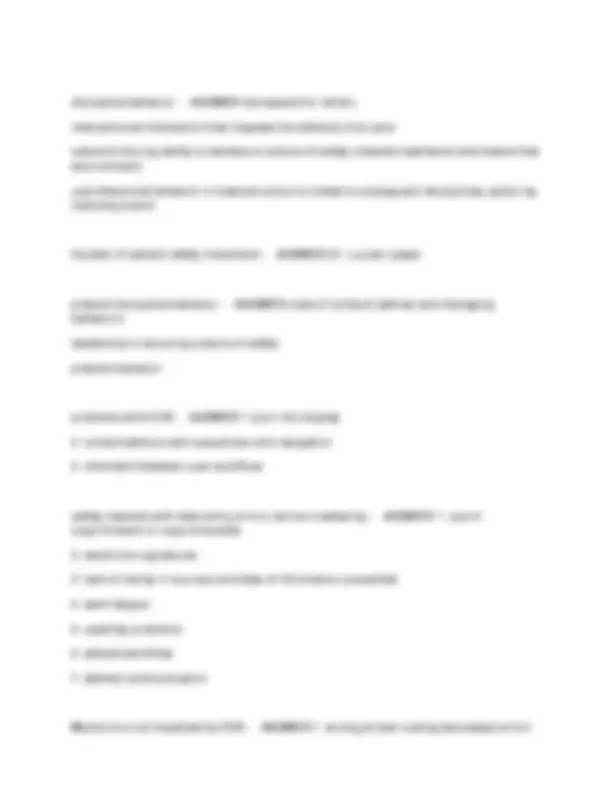

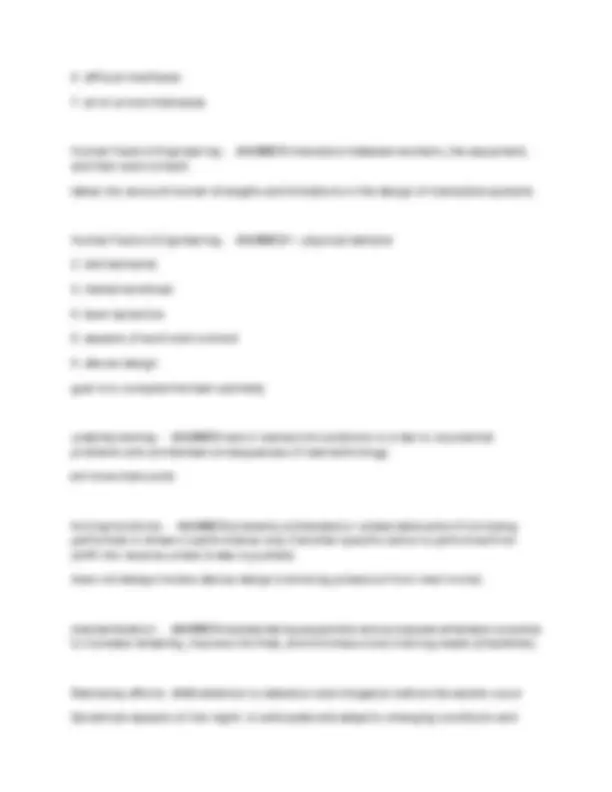
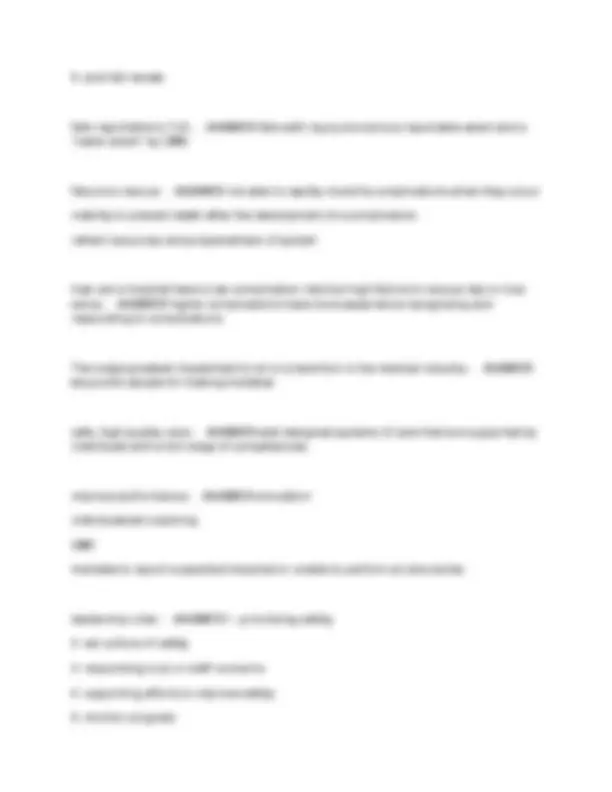
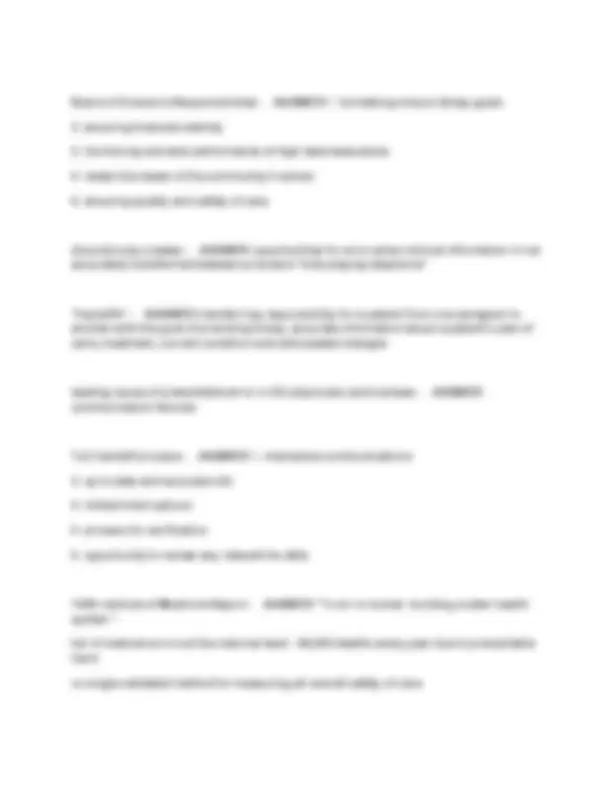
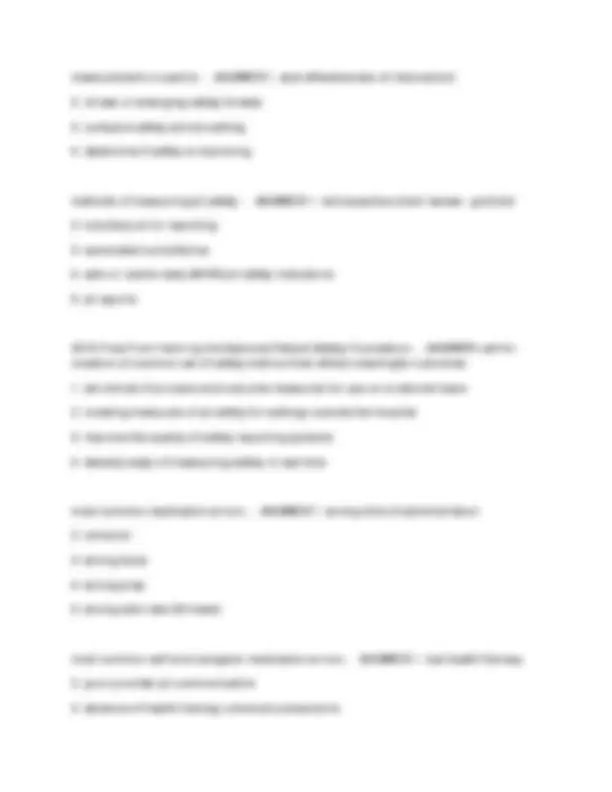
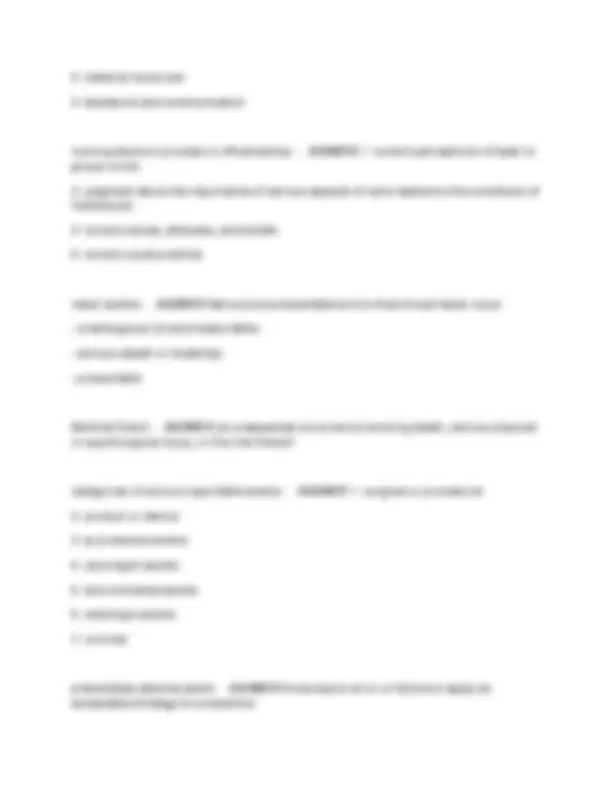
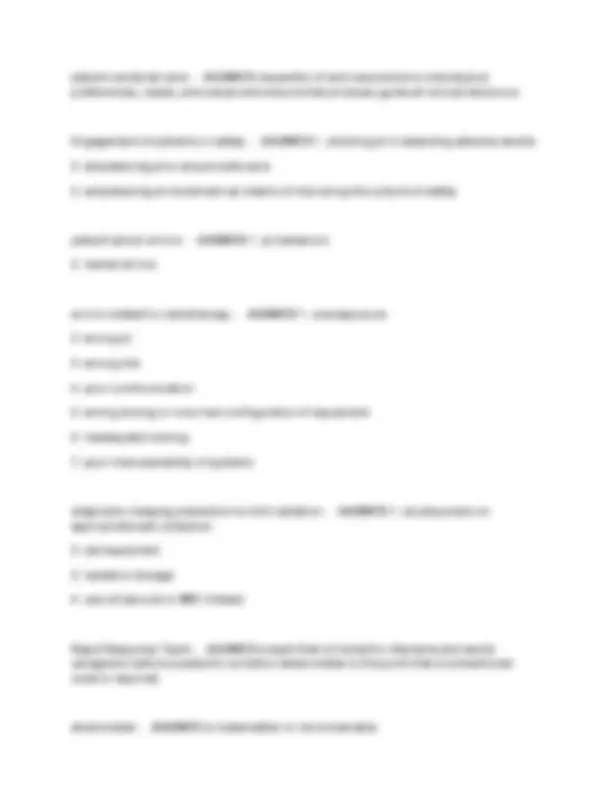
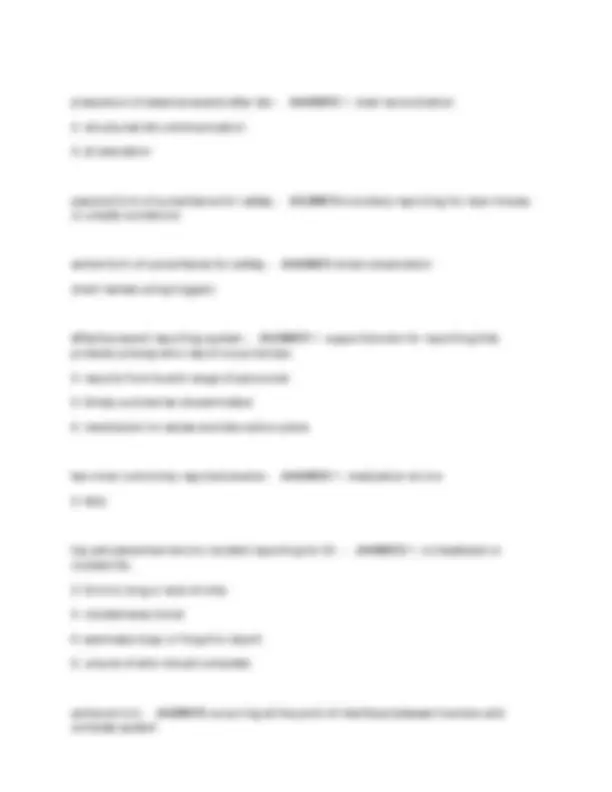
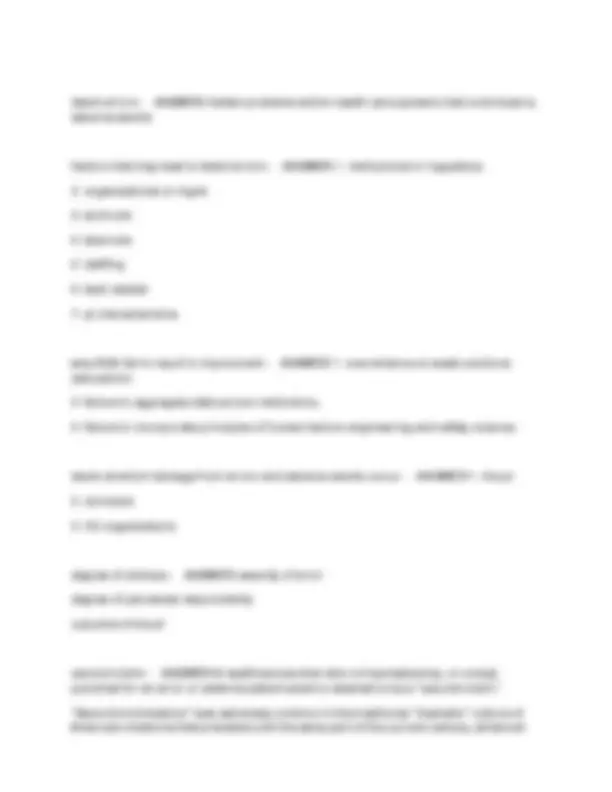
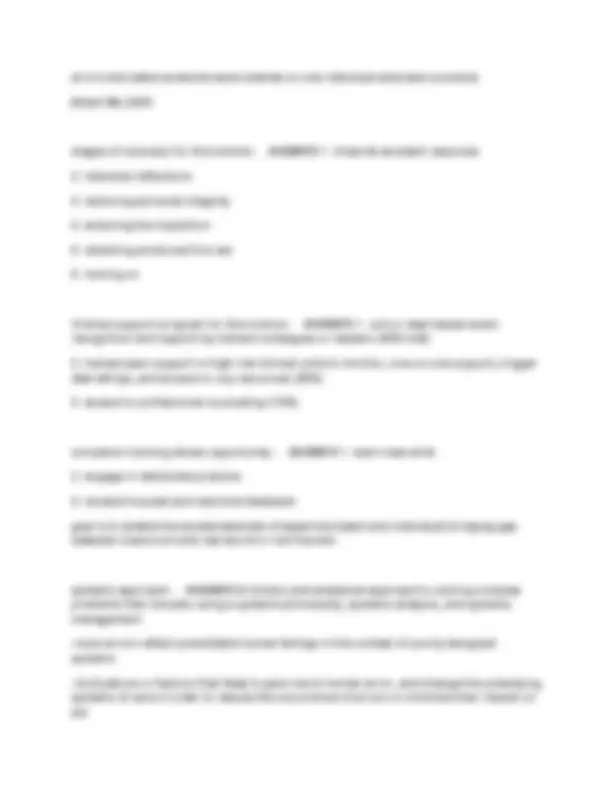
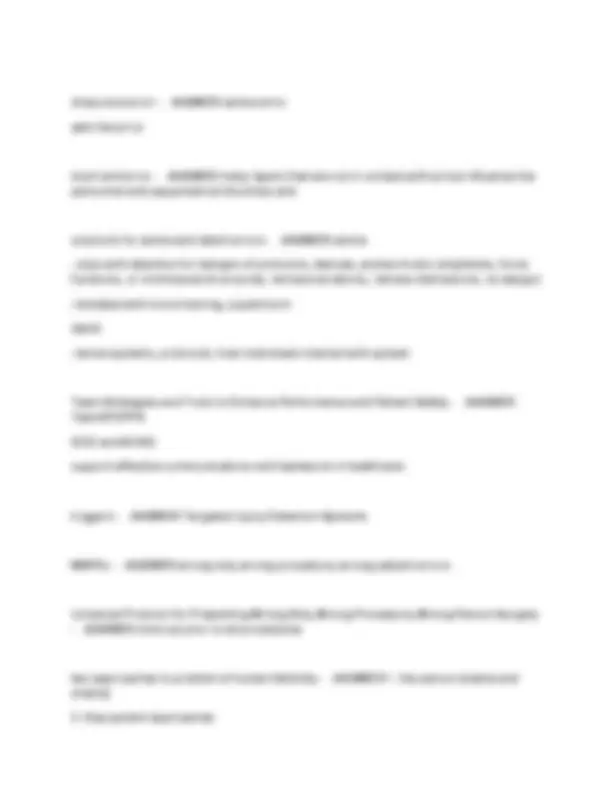
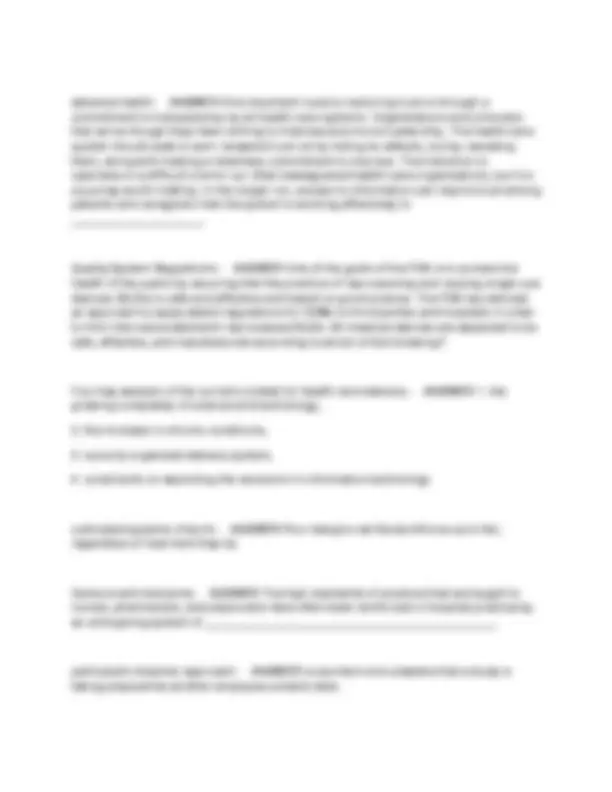
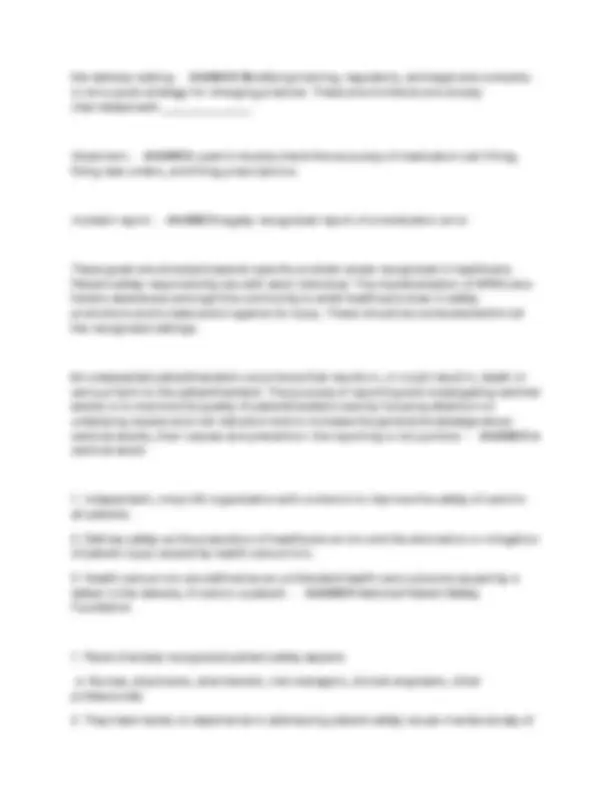
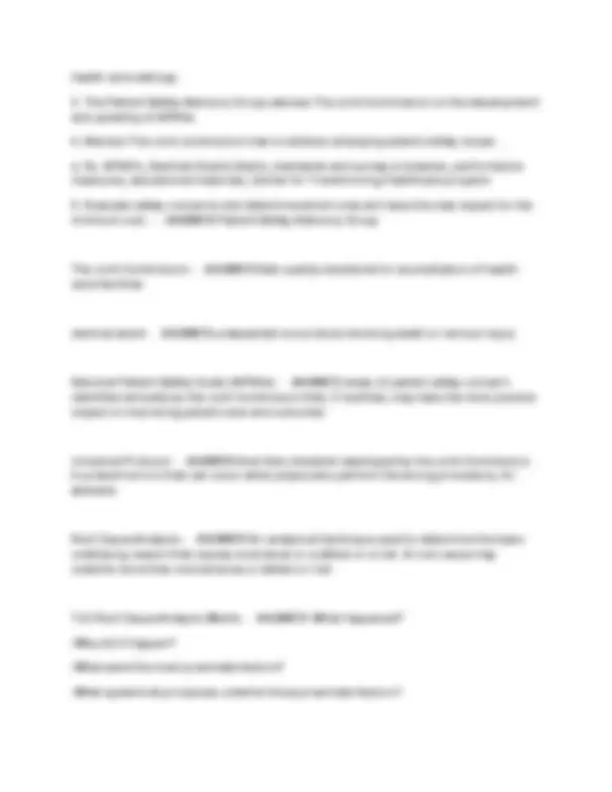
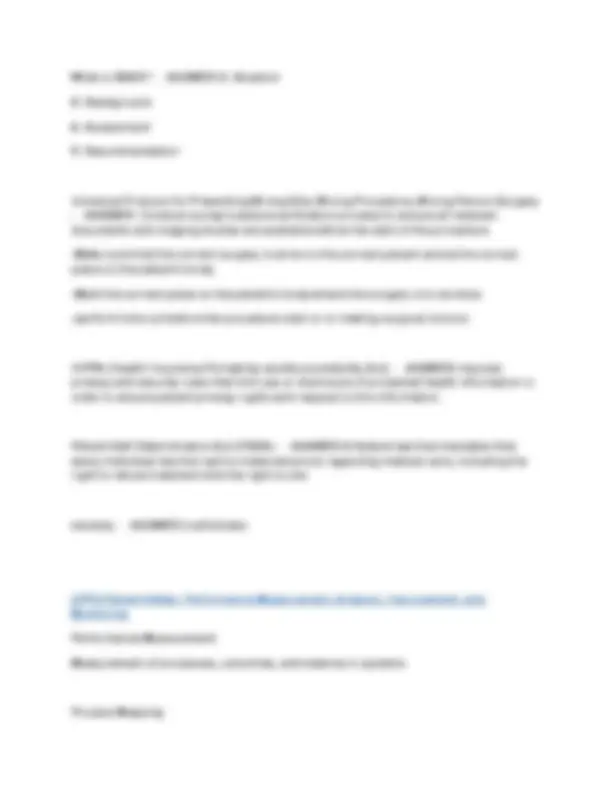









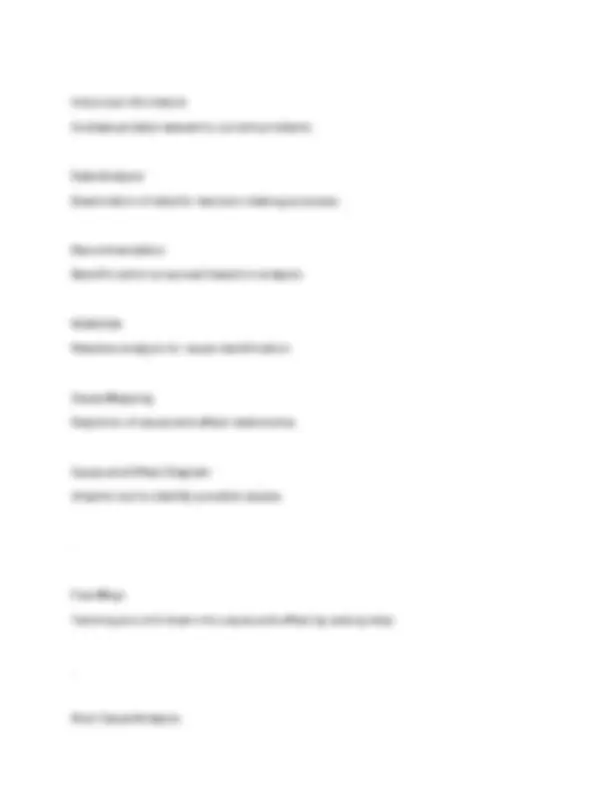







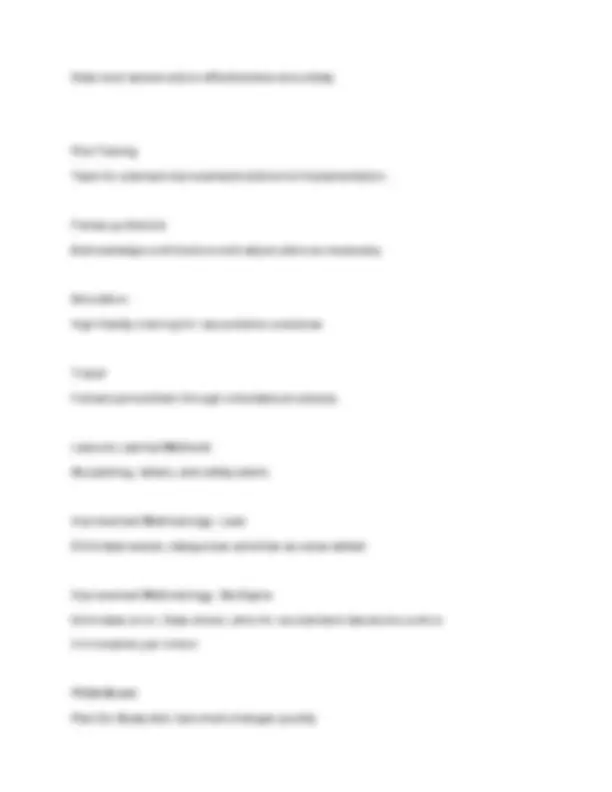



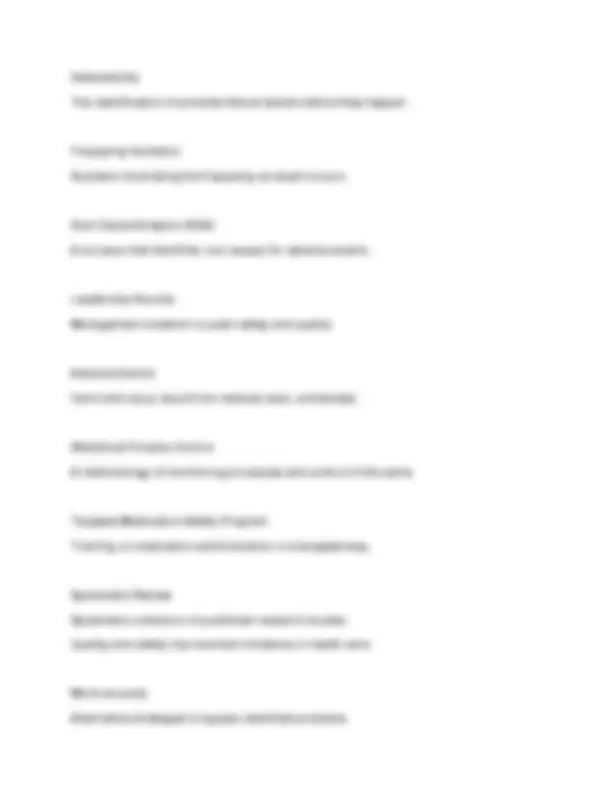



Study with the several resources on Docsity

Earn points by helping other students or get them with a premium plan


Prepare for your exams
Study with the several resources on Docsity

Earn points to download
Earn points by helping other students or get them with a premium plan
Community
Ask the community for help and clear up your study doubts
Discover the best universities in your country according to Docsity users
Free resources
Download our free guides on studying techniques, anxiety management strategies, and thesis advice from Docsity tutors
A comprehensive overview of key concepts and practices in patient safety, including definitions of common terms, examples of safety hazards, and strategies for improving patient care. It covers topics such as adverse events, near misses, communication, teamwork, and the role of technology in patient safety. Particularly useful for healthcare professionals seeking to enhance their understanding of patient safety principles and practices.
Typology: Exams
1 / 50

This page cannot be seen from the preview
Don't miss anything!











































-Certified Professional in Patient Safety, CPPS Patient Safety Certification, National Patient Safety Goals, Patient Safety and Risk Management
-CPPS Patient Safety: Performance Measurement, Analysis, Improvement, and Monitoring
Certified Professional in Patient Safety, CPPS Patient Safety Certification, National Patient Safety Goals, Patient Safety and Risk Management preventable adverse events - ANSWER those that occurred due to error or failure to apply an accepted strategy for prevention
Ameliorable adverse event - ANSWER events that, while not preventable, could have been less harmful if care had been different
adverse events due to negligence - ANSWER those that occurred due to care that falls below the standards expected of clinicians in the community
near miss - ANSWER an unsafe situation that is indistinguishable from a preventable adverse event except for the outcome - exposed but does not experience harm either through luck or early detection
error - ANSWER broader term referring to any act of commission or omission that exposes patients to a potentially hazardous situation
adverse event - ANSWER An injury caused by medical management (rather than the underlying disease) and that prolonged the hospitalization, produced at disability at the
time of discharge, or both
commision - ANSWER doing something wrong
omission - ANSWER failing to do the right thing
minimize alert fatigue - ANSWER 1. increase alert specificity to reduce inconsequential alerts
three concepts that influence safety in ambulatory care - ANSWER 1. role of pt and caregiver behaviors
checklist - ANSWER Algorithmic listing of actions to be performed for a given clinical procedure designed to ensure that no matter how often performed by a given clinician, no step will be forgotten reduce risk of slips consensus of required behaviors
slips - ANSWER failure of schematic (autopilot) behaviors lapses in concentration, distractions, or fatigue
mistake - ANSWER failures in attentional behavior lack of experience or insufficient training
High Reliability Organizations (HROs) - ANSWER persistent mindfulness with in an organization cultivate resilience by relentlessly prioritizing safety over other performance pressures consistently minimize adverse events despite carrying out intrinsically complex and hazardous work safety is emergent vs. static commitment to safety at all levels
HRO key features - ANSWER 1. know high-risk nature of activities and determine to have consistent safe operations
Patient Safety Culture Surveys and Safety Attitudes Questionnaire - ANSWER ask providers to rate the safety culture in their units and org as a whole poor perceived safety culture= increased error rates
just culture - ANSWER addressing systems issues that lead individual to engage in unsafe behaviors while maintain accountability human error (slip) at risk behavior (short cuts) reckless behavior (ignoring required safety steps)
Debriefing - ANSWER dialogue to learn from defects and improve performance through goal discussion, reflection to incorporate improvement or discover opportunities in future performance simulation real-life emergency responses teamSTEPPS
Components of debriefing - ANSWER 1. setting the stage
plus delta debriefing - ANSWER 1. What went well?
debriefing framework - ANSWER team evaluates if: had clear communication understanding of roles & responsibilities maintained situational awareness distributed workload cross-monitoring (asked and offered help prn) made, mitigated, or corrected errors
detection of errors and safety hazards - ANS goal to prospectively identify hazards before patient harmed and analysis of events that have already occurred to identify and address underlying systems flaws
rapid Strept test)
prominent reason for malpractice claims - ANSWER missed or delayed dx
predisposing factors for dx error in ES and surgery - ANSWER poor teamwork communication
prevent dx errors - ANSWER 1. info technology 2.telephone triage
components of disclosure that matter most to pts - ANSWER 1. disclosure of all harmful errors
Full Disclosure Principle - ANSWER disclose all circumstances and events, acknowledgement of responsibility, and apology fewer malpractice lawsuits and lower litigation cost
CANDOR - ANSWER Communication and Optimal Resolution used with disclosure of events
physician disruptive and disrespectful behavior impact on nursing - ANSWER dissatisfaction and likelihood of leaving nursing profession adverse events in OR
disruptive behavior - ANSWER disrespect for others interpersonal interaction that impedes the delivery of pt care subverts the org ability to develop a culture of safety (impacts teamwork and blame-free environment) unprofessional behavior in medical school is linked to subsequent disciplinary action by licensing board
founder of patient safety movement - ANSWER Dr. Lucian Leape
prevent disruptive behavior - ANSWER code of conduct defines and managing behaviors leadership in ensuring culture of safety prevent behavior
problems with EHR - ANSWER 1.poor info display
safety hazards with data entry errors can be created by - ANSWER 1. use of copy-forward or copy and paste
Med errors not impacted by EHR - ANSWER 1. wrong pt (bar coding decreases error)
Human Factors Engineering - ANSWER interaction between workers, the equipment, and their environment takes into account human strengths and limitations in the design of interactive systems
Human Factors Engineering - ANSWER 1. physical demand
usability testing - ANSWER test in real-world conditions in order to id potential problems and unintended consequences of new technology will id workarounds
forcing functions - ANSWER prevents unintended or undesirable action from being performed or allows it performance only if another specific action is performed first (shift into reverse unless brake is pushed) does not always involve device design (removing potassium from med rooms)
standardization - ANSWER standardizing equipment and processes whenever possible to increase reliability, improve info flow, and minimize cross-training needs (checklists)
Resiliency efforts - ANS attention to detection and mitigation before the events occur Dynamical aspects of risk mgmt. to anticipate and adapt to changing conditions and
recover from system anomalies
High Reliability Organizations (HROs) - ANS 1. preoccupation with failure
Health literacy - ANSWER person's ability to locate, process, and understand the primary health information available to them to take action on medical instructions and make decisions about one's health
universal precautions for health literacy - ANSWER 1. shame-free environment
CUSP - ANSWER comprehensive unit-based safety program combines culture of safety, teamwork, and communications together with checklists that incorporate evidence-based measure to prevent HAI
fatigue - ANSWER latent hazard and unsafe condition which leads to increased medical errors
cognitive performance less sensitive to sleep deprivation - ANSWER complex tasks that are rule based & interesting require critical reasoning in logical well-practiced tasks
falls reportable to TJC - ANSWER falls with injury are serious reportable event and a "never event" by CMS
failure to rescue - ANSWER not able to rapidly id and tx complications when they occur inability to prevent death after the development of a complication reflect resources and preparedness of system
how can a hospital have a low complication rate but high failure to rescue rate or vise versa - ANSWER higher complications have more experience recognizing and responding to complications
The single greatest impediment to error prevention in the medical industry - ANSWER we punish people for making mistakes
safe, high-quality care - ANSWER well designed systems of care that are supported by individuals with a full range of competencies
improve performance - ANSWER simulation individualized coaching CME mandate to report suspected impaired or unable to perform pt care duties
leadership roles - ANSWER 1. prioritizing safety
Board of Directors Responsibilities - ANSWER 1. formatting mission & key goals
discontinuity creates - ANSWER opportunities for error when clinical information in not accurately transferred between providers "kids playing telephone"
"handoffs" - ANSWER transferring responsibility for a patient from one caregiver to another with the goal of providing timely, accurate information about a patient's plan of care, treatment, current condition and anticipated changes
leading cause of preventable error in ED physicians and trainees - ANSWER communication failures
TJC handoff process - ANSWER 1. interactive communications
1999 institute of Medicine Report - ANSWER "To err is human: building a safer health system " toll of medical errors at the national level - 98,000 deaths every year due to preventable harm no single validated method for measuring eh overall safety of care
prevention of medication errors - ANSWER 1. barcoding
medication error - ANSWER an error of commission or omission at any step between prescribing and receiving the med
adverse drug event - ANSWER harm experienced by a pt as a result of exposure to a medication does not necessarily indicate an error or poor quality care
Preventable ADE - ANSWER med error that reaches pt and causes any degree of harm about half are preventable
potential ADE - ANSWER med errors that do not cause any harm either because they are intercepted or luck (incorrect dose given but no clinical consequences)
nonpreventable ADE - ANSWER side effects event when prescribed and adm properly
strongest risk factor for ADE - ANSWER polypharmacy
STOPP criteria - ANSWER Screening Tool of Older Persons' potentially inappropriate Prescriptions more accurate predict ADE than Beers criteria
most commonly meds that cause ADE - ANSWER 1. antidiabetic agents
medication reconciliation - ANSWER screen for:
Med rec is done - ANSWER 1. time of admt
med rec alone does not - ANSWER reduce readmissions or other ADE
nursing omission error - ANSWER missed nursing care needed nursing care that is delayed, partially completed, or not completed at all
structural factors contributing to missed nursing care - ANSWER 1. labor resources
patient-centered care - ANSWER respectful of and responsive to individual pt preferences, needs, and values and ensure that pt values guide all clinical decisions
Engagement of patients in safety - ANSWER 1. enlisting pt in detecting adverse events
patient action errors - ANSWER 1. pt behaviors
errors related to radiotherapy - ANSWER 1. overexposure
diagnostic imaging prevention to limit radiation - ANSWER 1. ed physicans on appropriate test utilization
Rapid Response Team - ANSWER a team that is trained to intervene and assist caregivers before a patient's condition deteriorates to the point that a conventional code is required.
ameliorated - ANSWER to make better or more tolerable
prevention of adverse events after d/c - ANSWER 1. med reconciliation
passive form of surveillance for safety - ANSWER voluntary reporting for near misses or unsafe conditions
active form of surveillance for safety - ANSWER direct observation chart review using triggers
effective event reporting system - ANSWER 1. supportive env for reporting that protects privacy who report occurrences
two most commonly reported events - ANSWER 1. medication errors
top perceived barriers to incident reporting for Dr. - ANSWER 1. no feedback or incident f/u
active errors - ANSWER occurring at the point of interface between humans and complex system